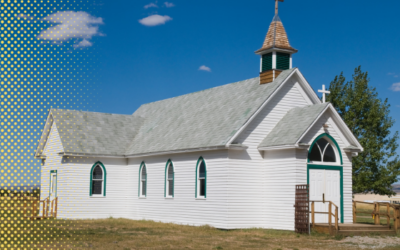Answering the question “What is confirmation?” is both simple and complex. Confirmation is both the rite of the church whereby individuals make a public affirmation of their baptismal faith as well as an educational ministry whereby the church imparts training in the basics of the faith. The Evangelical Dictionary of Christian Education states, “The term ‘confirmation’ was used as early as A.D. 439. It referred to a rite that followed Baptism.”1 Burreson states, “Confirmation is the epitome of a rite and process in search of meaning, a rite desperately seeking a rationale reflective of Lutheran theology in the twenty-first century.”2 The reality is that in the church today it can be argued that there are as many views of confirmation as there are churches engaged in confirmation ministry.
Before attempting to answer the question “What is Confirmation?” it would be good to place confirmation in its proper context. One of the first things to note is that confirmation is best understood as a part of the ancient practice of catechesis. Catechesis has evolved tremendously over the centuries and shows no signs of settling into any sort of stasis. Many of the early church fathers taught from an instructional outline remarkably similar to the Six Chief Parts that Luther used in his Small Catechism. Over the centuries catechetical instruction has moved from a clandestine small group huddled in homes, to mass catechetical sermons presented by bishops, to printed catechisms, to the multitude of instructional models in use today.
It is interesting to note that Luther was not initially a fan of retaining the practice of confirmation.
In a sermon in 1522 (Luther) conceded, that he “would permit confirmation as long as it is understood that God knows nothing of it, and has said nothing about it, and that what the bishops claim for it is untrue. They mock our God when they say that it is one of God’s sacraments, for it is purely a human contrivance.” The following year he said: “Confirmation should not be observed as the bishops desire it. Nevertheless we do not find fault if every pastor examines the faith of the children to see whether it is good and sincere, lays hands on them, and confirms them.”3
It was only following Luther’s work to assess the level of biblical understanding possessed by both the clergy and laity that he set about working to transform what had developed into a Catholic sacrament into an educational process and church rite.
From a theological standpoint confirmation finds its source in Baptism. It is in Baptism that one is adopted by Christ and made a part of God’s family. Possessing no pre-existing faith, the waters of Baptism both wash away sins and give to the baptized saving faith. Confirmation thusly can be seen as a bridge moment or transition from childhood into adulthood. This may seem strange to our modern ears to talk about 13- and 14-year-olds as transitioning into adulthood as our society has extended that transition (and continues to do so) well beyond that of prior generations. Setting aside the developmental challenges of maintaining this transition at this stage of maturation as it currently exists in our society, the place of confirmation remains a time of transition for students who are, perhaps for the first time, really challenged to take ownership of their faith personally.
As students develop the ability to think abstractly about matters of faith, the church comes alongside to catechize them into a deeper understanding of the content of their faith. Through this doctrinal instruction students are not merely presented with certain factual statements to assent to, but ideally engaged in a richer and more personal faith and relationship with Christ. Historically this latter emphasis has been a root cause for changes in educational approaches. As noted above, changes in societies around the church have caused the church in turn to make adjustments in how catechesis is conducted. This is where I would argue we are today and why we are again asking the question “What is Confirmation?”
When society is relatively stable it may be thought to be simple to move forward with a standard approach for catechesis. However, Repp pointed out that “the history of confirmation in the Lutheran Church clearly shows that no one type of confirmation has won acceptance everywhere at any time.”4 We certainly do not live in a time noted for its stability. Faithful Lutherans face enormous challenges in catechizing emerging generations who are growing up in a milieu dominated by truth untethered to traditional standards of objective verification and universal applicability. So how then might we find the place of confirmation in the ministry of the church today?
I would suggest that we answer “What is Confirmation?” for emerging generations as the following:
1. An intentionally intergenerational conversation about the content and relationship of faith to daily life. Confirmation should be intentionally intergenerational in order that we connect emerging generations with the whole of the body of Christ rather than segmenting them into age restricted groups. This is to be a conversation to encourage the further exploration of the faith on the part of all generations as well as to model lifelong learning for catechumens.
2. An educational process of the church geared toward moving students from undeveloped to integrated faith.5 We should keeping in mind both horizontal and vertical dimensions of faith development. The vertical dimension stresses the relationship between the catechumen and God, while the horizontal dimension stresses the “relationship with and responsibility to others.”6
3. Critical thinking training that equips young people to not only understand the content of the faith but to defend it, recognizing the foundational value and existence of truth as found only in Christ. Here the concern is equipping students to understand the nature of truth as presented in the Christian faith in contradistinction to the postmodern approaches that suggest that truth is subjective rather than objectively knowable.
These defining points do not walk away from the historic practice of the church, but rather seek to ground that practice in a solid foundation. In answering “What is Confirmation?” we must ask where our students are at in this world. Confirmation must take into account the challenges to the faith that students today face. If we are to continue to catechize emerging generations so that they are equipped to echo back the faith given to them, we must take into account any and all potential challenges to their understanding and embracing the faith.
Confirmation is both a rite of the church and a catechetical process. We celebrate the rite marking a transition from a child’s faith into more mature self-actualized faith. We continue the catechetical process for a lifetime, ever growing in faith and relationship with the Trinity who gave the faith to us and daily nurtures its growth.
1Susan L. Houglum, “Confirmation,” in Evangelical Dictionary of Christian Education edited by Michael Anthony (Grand Rapids, MI: Baker Academic, 2001) p. 168.
2Kent Burreson, “What is confirmation? Shaping a Word-filled, sacramental life” In Confirmation Basics edited by Mark Sengele (St. Louis, MO: Concordia Publishing House, 2009) p. 23.
3Arthur C. Repp, Confirmation in the Lutheran Church (St. Louis, MO: Concordia Publishing House, 1964) p 17.
4Arthur C. Repp, Confirmation in the Lutheran Church (St. Louis, MO: Concordia Publishing House, 1964) p 155.
5Eugene C. Roehlkepartain, “Loos Bonds, Emerging Commitments: The Lives and Faith of Lutheran Youth,” The Journal of Youth Ministry (Fall 2006): p. 96.
6Ibid., p. 96.









0 Comments